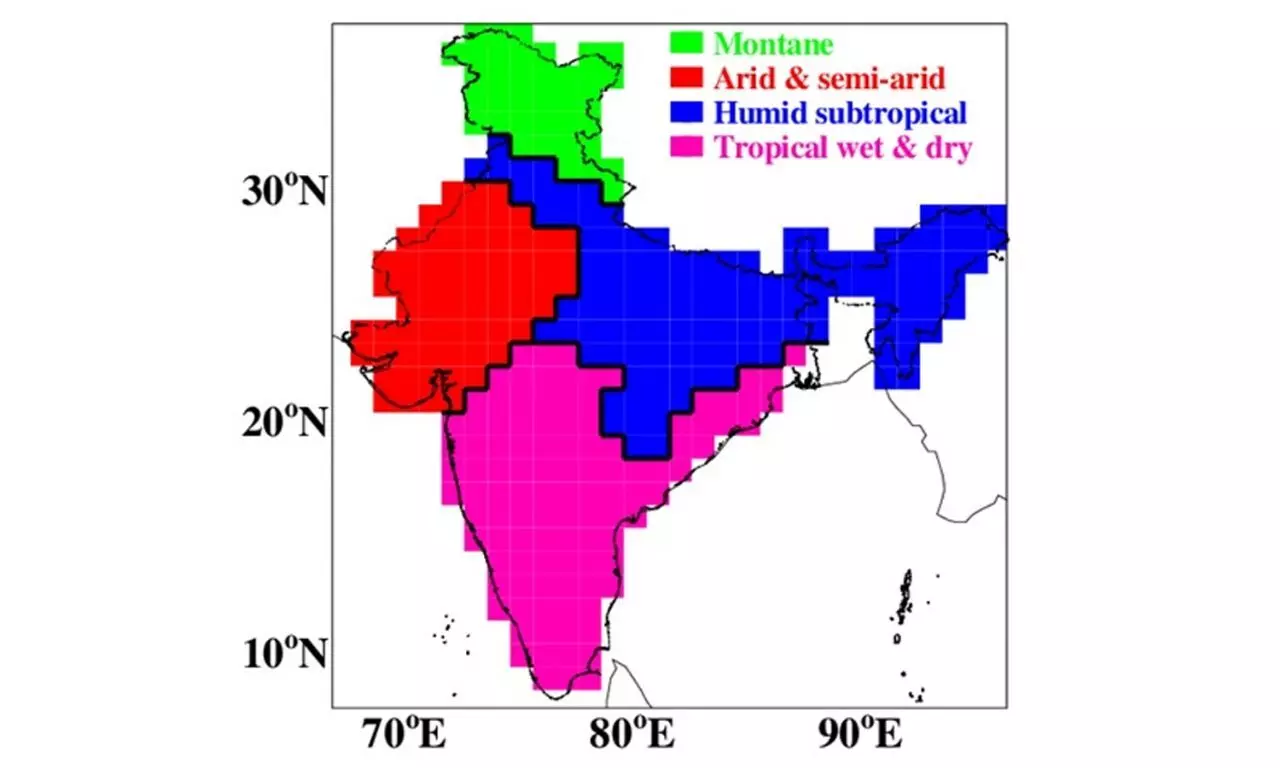More heat waves, fewer cold waves are the new normal in India: UoH Study
Climate change has increased the frequency, intensity, and effect of certain weather phenomena such as heat waves and cold waves

HYDERABAD: More heat waves and fewer cold waves are the new normal in India, according to a study carried out by the University of Hyderabad (UoH).
According to the study, human activity has a significant impact on the climate system. Human-caused (anthropogenic) climate change has resulted in a 1 degree Celsius increase in global average surface temperature from the pre-industrial era.
According to the study, climate change has increased the frequency, intensity, and effect of certain weather phenomena such as heat waves and cold waves. Heat and cold waves have serious consequences for agriculture, human health, and industrial production. Heat waves have been more common in India in the last decade, whereas cold waves have become less common in the last decade.
A study led by Aninda Bhattacharya (Master of Science in Ocean and Atmospheric Sciences, 2020-2022 Batch) examined the trend in the frequency of occurrence of days with anomalously high temperatures (referred to as heat waves) and days with anomalously low temperatures (referred to as cold waves) over different climatic regions of India from 1970 to 2019.
India has four major climatic zones: 1. montane (a harsher environment with lower temperatures in mountainous regions), 2. subtropical humid, 3. arid and semi-arid, and 4. dry and wet tropical.
Bhattacharya discovered that days with abnormally high temperatures increase throughout the summer whereas days with abnormally low temperatures decrease during the winter. A heat wave is defined as the occurrence of abnormally high temperatures for three days or more in a row. Heat wave episodes were growing at a rate of 0.6 each decade, according to the authors.
A cold wave event occurs when temperatures were abnormally low for three consecutive days or more. Cold wave episodes were declining at a rate of 0.4 incidents each decade, according to the researchers.
The authors found conflicting patterns in heat waves and cold waves. Heat waves, for example, were more common in the arid and semi-arid climatic regions, but cold waves were less common in the same regions.
The authors also compared the current-generation computer models used to predict future climate with India Meteorological Department(IMD) observations. Authors found that models failed to capture observed spatial features in the trend in the frequency of occurrence of heat waves and cold waves in toto over India. This underlines the need for a better process-level understanding of the factors governing these extreme events and their representations in the models over the Indian region.
This study was led by Aninda Bhattacharya, Dr. Abin Thomas, and Dr. Vijay Kanawade from the Centre of Earth, Ocean and Atmospheric Sciences, School of Physics at the University of Hyderabad, in collaboration with Prof. Chandan Sarangi from IIT Madras, Dr. P. S. Roy from World Resources Institute (WRI) and Dr. Vijay K. Soni from India Meteorological Department, Ministry of Earth Sciences, New Delhi. The study was published in The Journal of Earth System Science.



